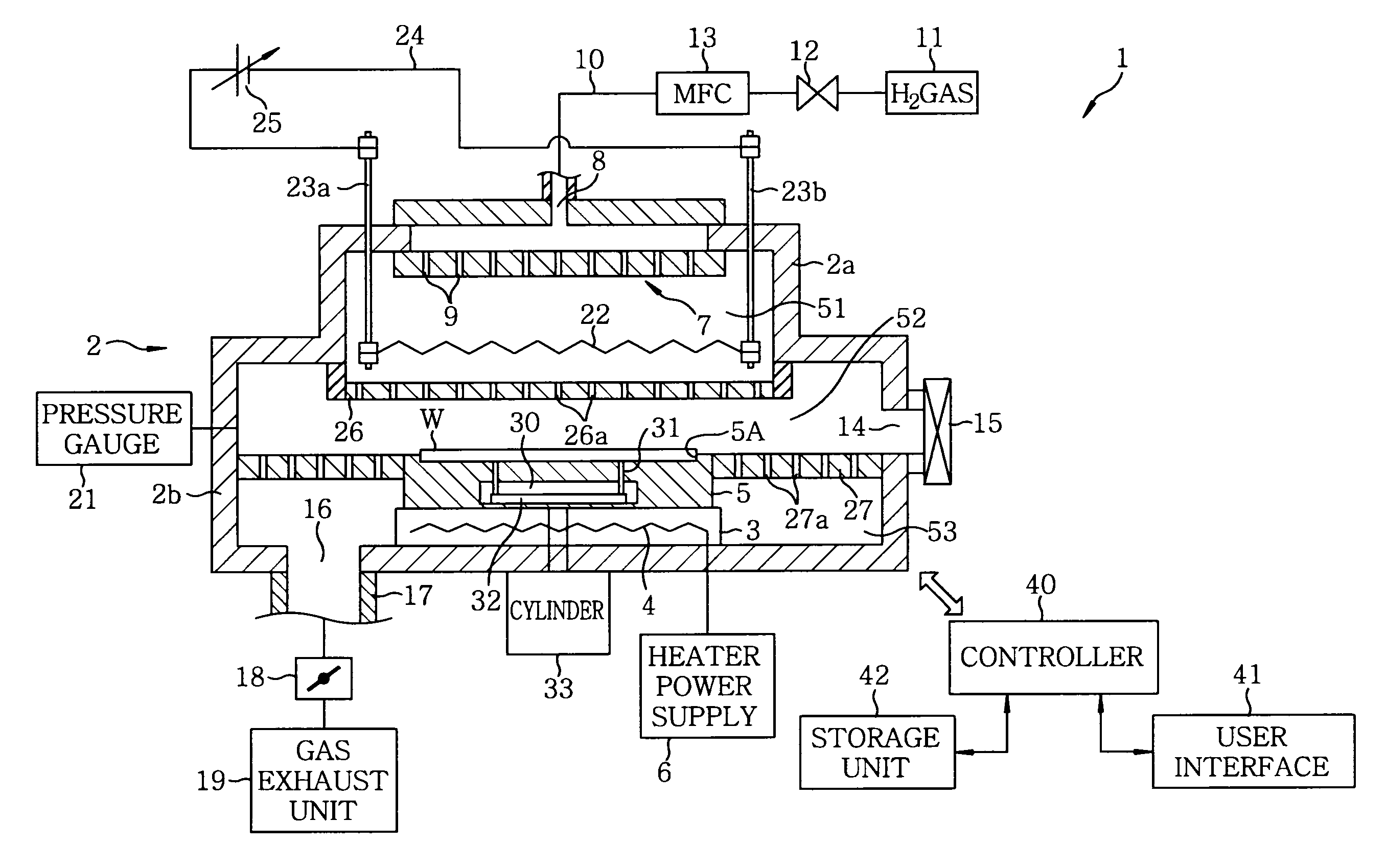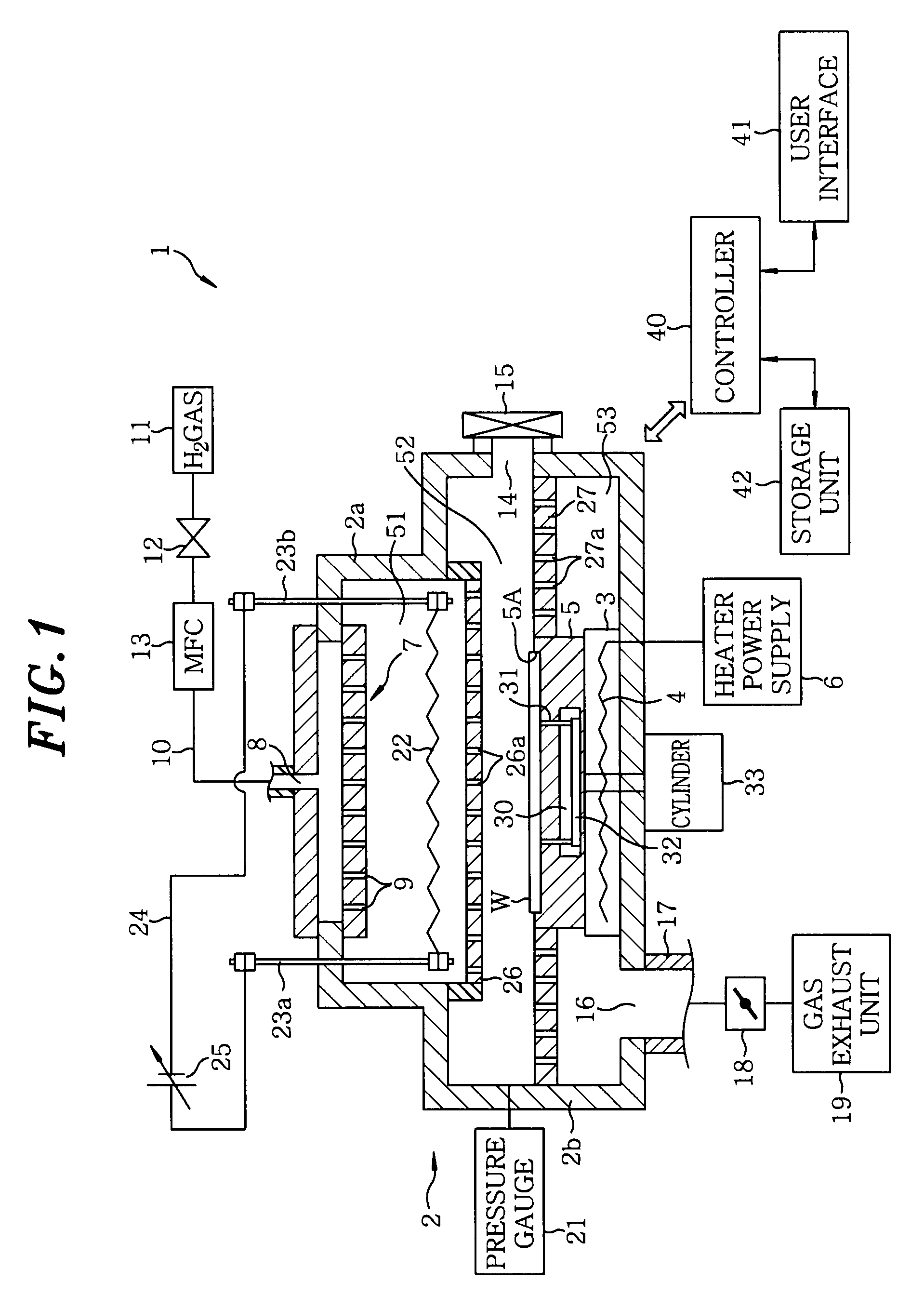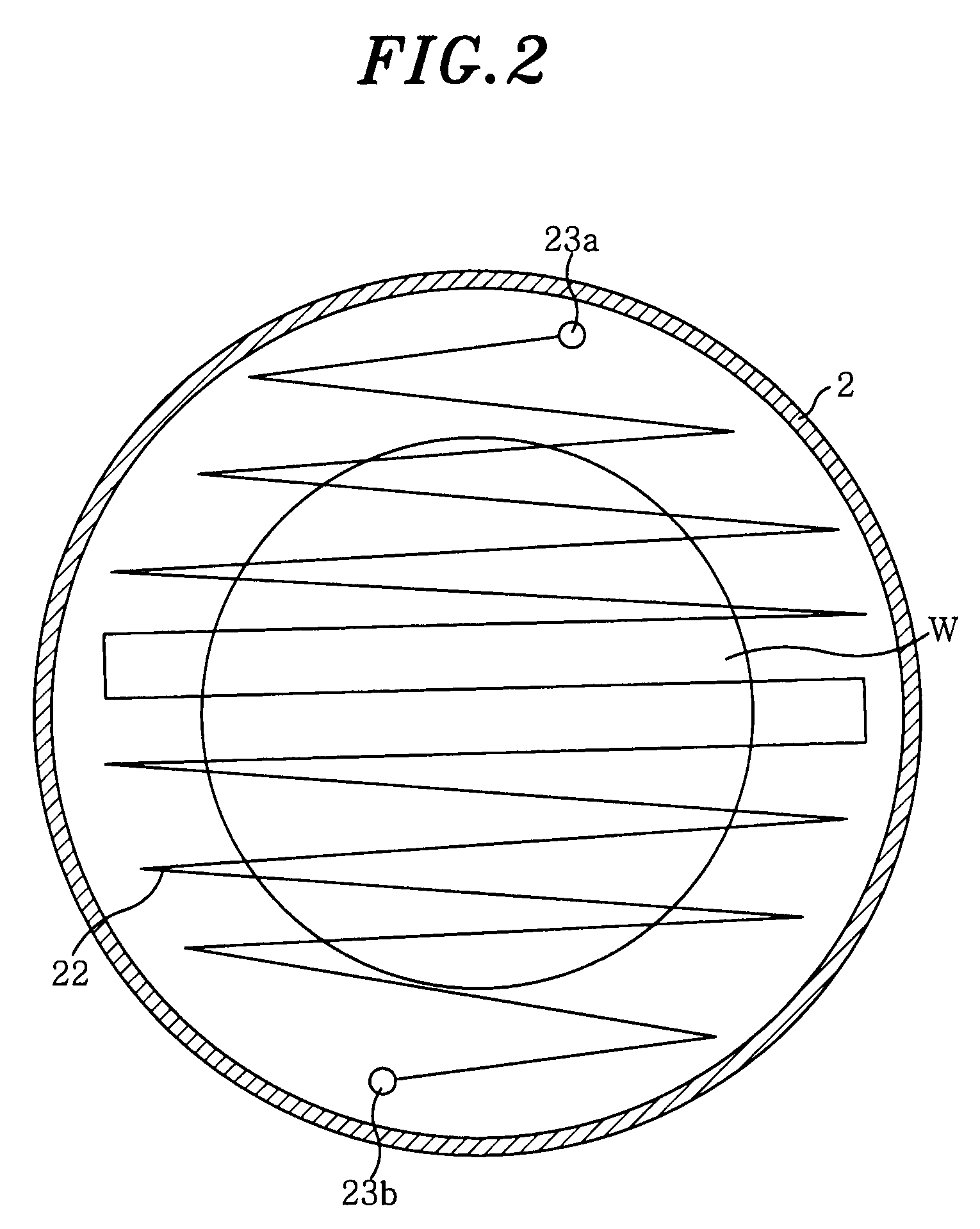Substrate processing apparatus
- Summary
- Abstract
- Description
- Claims
- Application Information
AI Technical Summary
Benefits of technology
Problems solved by technology
Method used
Image
Examples
Embodiment Construction
[0036]Hereinafter, the embodiments of the present invention will be described in detail with accompanying drawings which form a part hereof.
[0037]First, a first embodiment of the present invention will be described. FIG. 1 is a cross-sectional view showing a substrate processing apparatus in accordance with the first embodiment of the present invention.
[0038]A substrate processing apparatus 1 is configured as a resist peeling (ashing) apparatus, and has an evacuative chamber (processing vessel) 2. The chamber 2 includes an upper portion 2a of a small diameter and a lower portion 2b of a large diameter. Placed on the bottom of the lower portion 2b is a heater plate 3 having a heater 4 buried therein, and a wafer stage 5 to mount thereon a semiconductor wafer (hereinafter, simply referred to as a wafer) W is placed on the heater plate 3, the wafer being served as a target substrate to be processed having a resist film to be peeled off. A recess 5a for mounting the wafer W thereon is f...
PUM
 Login to View More
Login to View More Abstract
Description
Claims
Application Information
 Login to View More
Login to View More - R&D
- Intellectual Property
- Life Sciences
- Materials
- Tech Scout
- Unparalleled Data Quality
- Higher Quality Content
- 60% Fewer Hallucinations
Browse by: Latest US Patents, China's latest patents, Technical Efficacy Thesaurus, Application Domain, Technology Topic, Popular Technical Reports.
© 2025 PatSnap. All rights reserved.Legal|Privacy policy|Modern Slavery Act Transparency Statement|Sitemap|About US| Contact US: help@patsnap.com



